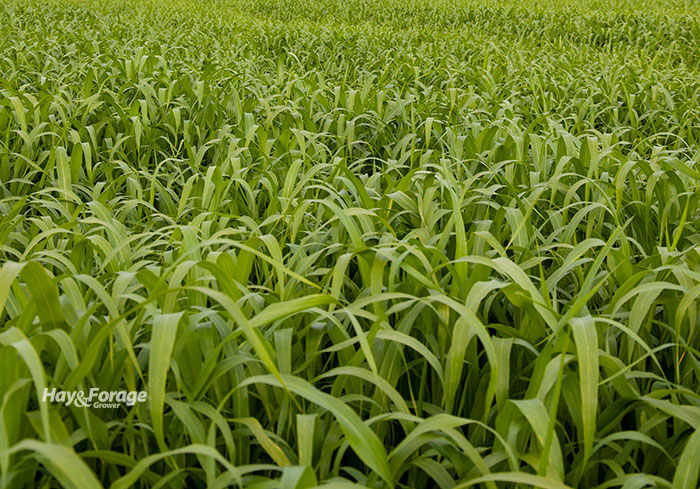Summer annuals trump the slump |
| By Amber Friedrichsen, Associate Editor |
|
|
 Cool-season grasses are the star of the show during the spring and fall, but these forages tend to get stage fright during the hot, dry summer months. Planting summer annuals can mitigate the effects of a summer slump and ensure steady forage production the entire season. Summer annuals such as pearl millet, crabgrass, and sorghum-sudangrass hybrids have high-yielding, high-quality potential. These grasses can supplement forage systems and be used for grazing both cows and calves. “The high quality of the forage can add extra weight on calves,” says Gary Bates, director of the University of Tennessee Beef and Forage Center. “It can also help the cows rebreed faster and milk better.” Summer annuals can also be cut to replenish hay inventories if hay is fed to compensate for poor forage production when temperatures start to swell. “Summer annual grasses can provide forage production when poor pasture growth might otherwise require hay feeding,” the extension forage specialist says. “If your hay supplies have not been restored, these grasses can help restock the hay barn.” Warm-season summer annuals can be conventionally or no-till planted at 0.5 to 1.5 inches deep. Sorghum-sudangrass hybrids are more tolerant of cool temperatures and should be planted from April 20 to July 1, depending on latitude. Plant pearl millet and crabgrass from May 1 to July 1. Bates instructs planting pearl millet at a rate of 10 to 15 pounds per acre if drilled, or 20 pounds per acre if broadcasted. Plant sorghum-sudangrass at 30 pounds per acre if drilled, or 45 pounds per acre if broadcasted. Crabgrass should be planted at 4 to 6 pounds of live seed per acre. A soil test will indicate fertilization requirements for potash, phosphate and lime. As for nitrogen, Bates suggests applying 30 to 60 pounds per acre at establishment. He also says to apply another 30 pounds of nitrogen per acre in mid-July if soil moisture is adequate. Whether grazing or cutting these grasses, harvest summer annuals before they get too tall. Quality of the crop declines quickly with maturity. “Cut for hay when plants reach 15 inches,” Bates instructs. “Grazing should begin at approximately 15 to 18 inches and stop at about 6 inches. For crabgrass, graze when the plant reaches 12 inches.” Toxicities can be a concern when planting summer annuals. Nitrate poisoning can occur in pearl millet, crabgrass, and sorghum-sudangrass hybrids. Toxic levels of nitrate are especially likely during periods of water stress, so avoid cutting hay during these times. Another toxicity specific to sorghum-sudangrass is prussic acid poisoning. This occurs after a frost, so delay grazing for a week or two after a freeze. However, there is no risk of prussic acid in hay or silage because it degrades during drying.  Amber Friedrichsen Amber Friedrichsen is serving as the 2021 Hay & Forage Grower editorial intern. She currently attends Iowa State University where she is majoring in agriculture and life sciences education-communications with a minor in agronomy. Friedrichsen grew up on her family’s diversified crop and livestock farm near Clinton, Iowa. |
